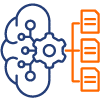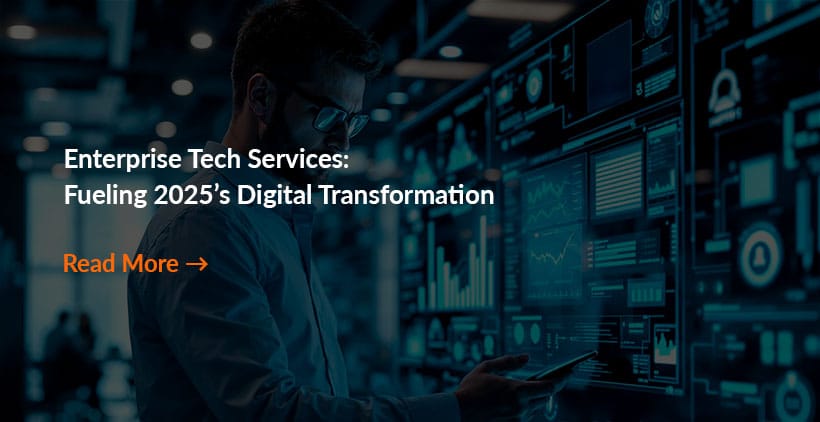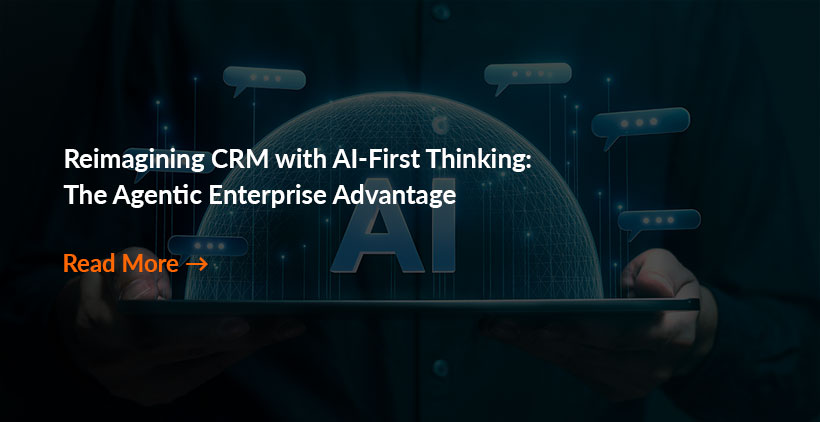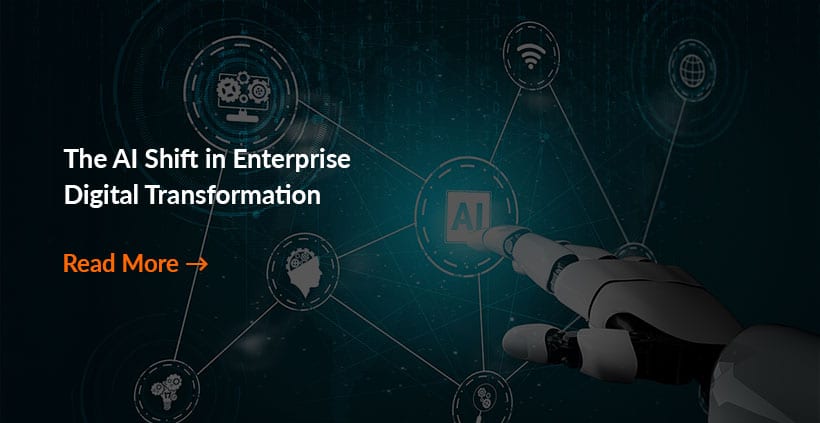
Digital transformation is not a choice or competitive advantage for a few forward-thinking enterprises. It is a fundamental reality that every organization must wake up to. Generative AI (GenAI) usage was democratized when ChatGPT was launched, and technologies have evolved rapidly. As cloud services, AI, automation, digital twins, and edge computing become central to their operations and value delivery models, businesses must transcend pilots and accelerate digitalization at scale. The shift requires robust enterprise tech services that provide the infrastructure, integration, and intelligence for sustainable modernization.
In 2025, the predominant narrative for enterprise tech services comprises both disruption and opportunity. Market volatility, the recalibration of AI systems, and a renewed focus on hyper automation compel organizations to rethink how they invest, operate, and innovate. The move from cost optimization to continuous transformation is being powered by agile, integrated enterprise tech solutions that include:

Development and Deployment of Agentic AI
While GenAI excels at creating content and insights, agentic AI can reason, plan, interact, and handle autonomous task execution, aligning with business goals. It offers a virtual workforce of agents to offload, support, and supplement manual work and traditional applications. Automating complex processes, personalizing customer interactions, and streamlining operations in real-time helps organizations respond faster to market shifts. Agentic AI can be combined with tools like search engines, email, and code executors to run complex workflows, constantly employing reinforcement learning techniques to improve performance.

AI Governance Platforms
Enterprises are aware of the risks of unstructured AI growth. To ensure fairness and transparency in usage, they must deploy governance platforms that simplify bias detection, model explainability-accountability-auditability, data privacy, and compliance with emerging laws like the EU AI Act. From AI risk dashboards to governance frameworks embedded in application development cycles, enterprises can explore a range of solutions to operationalize trust and enforce discipline.

Ambient Intelligence and IoT Integration
Ambient intelligence integrated with IoT enables systems to sense, respond to, and adapt seamlessly within physical environments. It leverages sensor networks, edge devices, machine learning, and context-aware AI to deliver real-time insights without explicit user input. Ambient intelligence collects data on the environment and user behavior when working in an IoT ecosystem, with temperature sensors, motion detectors, and cameras. Quick analysis of this data leads to proactive decision-making, reduced operational friction, and hyper-personalized services. In manufacturing, it improves process optimization, predictive maintenance, and supply chain management. Utilities can deploy this enterprise tech service to manage smart grids and boost energy efficiency. For healthcare providers, it facilitates continuous patient monitoring and adaptive clinical workflows. The convergence of ambient intelligence and IoT helps move from reactive data usage to autonomous systems that drive efficiency, safety, and scalability, powerfully transforming business infrastructure.

Spatial Computing Platforms
Spatial computing is emerging as a game-changing, transformative force in enterprise technology. Blending AR, VR, and 3D mapping with IoT and AI-driven analytics provides immersive visualization and real-time spatial awareness. It also closes the gap between business and technical data, enabling leaders to make informed strategic choices. Core features like object recognition and real-time environmental interaction enhance precision, reduce errors, and accelerate workflows. A known application of spatial computing in healthcare is the simulation of medical procedures and access to overlaid diagnostics in real-time. Manufacturing organizations are now implementing VR systems for remote training and AR to assist with on-site maintenance through guided overlays. Utilities deploying these platforms benefit from AR-driven asset inspections, infrastructure planning, and field service optimization.

Disinformation Security Services
While information security measures protect sensitive data’s confidentiality, availability, and integrity, disinformation security counters human vulnerabilities and cognitive biases that malicious actors exploit. Businesses can use it to combat threats like identity fraud, account takeovers, and reputational harm. Organizations deploy disinformation security tools to catch irregularities in user behavior and intercept synthetic or manipulated content targeting systems. These solutions safeguard brand reputation by tracking digital ecosystems for deepfakes and propaganda campaigns that could erode stakeholder trust. In the age where AI-driven misinformation can proliferate quickly, disinformation security offers a proactive defense mechanism to enterprises, reducing fraud, securing digital identities, and preserving business integrity.

Hybrid Computing
To align digital transformation with sustainability, companies must adopt greener energy sources for data centers and switch to more efficient hardware. No surprise that hybrid computing is gaining traction as a strategic technology service. Integrating on-premises infrastructure with private and public cloud environments optimizes workload placement, essential to improving latency-sensitive applications’ functioning and meeting data residency requirements. Through hybrid computing, enterprises can allocate resources dynamically, scaling up compute power during peak demand while retaining control over sensitive processes. In this setup, they also streamline data management and accessibility across platforms. Additionally, the architecture enhances disaster recovery by delivering redundant backups and rapid failover capabilities between environments.
Augmented by Convergence: Tech’s Compounding Impact
As industries work on digital transformation for 2025 and beyond, the true potential of evolved and emerging technologies is not just in their discrete capabilities but in how they intersect and complement each other. When unified tactically, their output can build an active ecosystem where intelligence, security, spatial cognizance, and infrastructure collectively invigorate business transformation. The convergence will allow enterprises to advance from isolated digital upgrades to constant, sustainable innovation. As technology tools and solutions converge, they will also support smarter decision making and create a flywheel effect to bolster growth and customer experiences.




